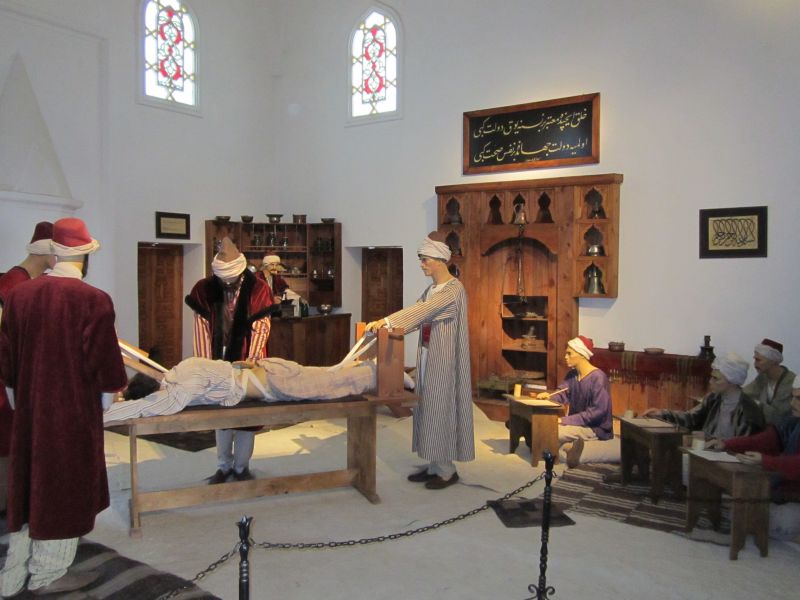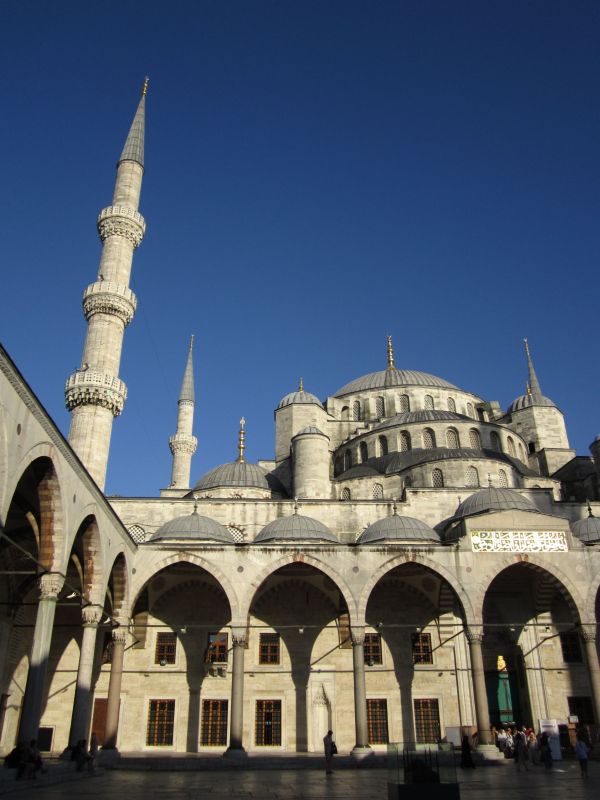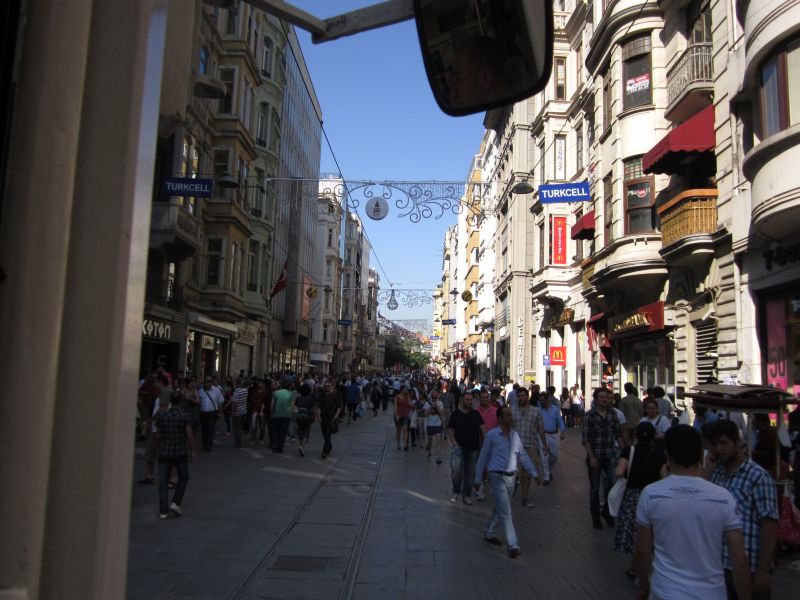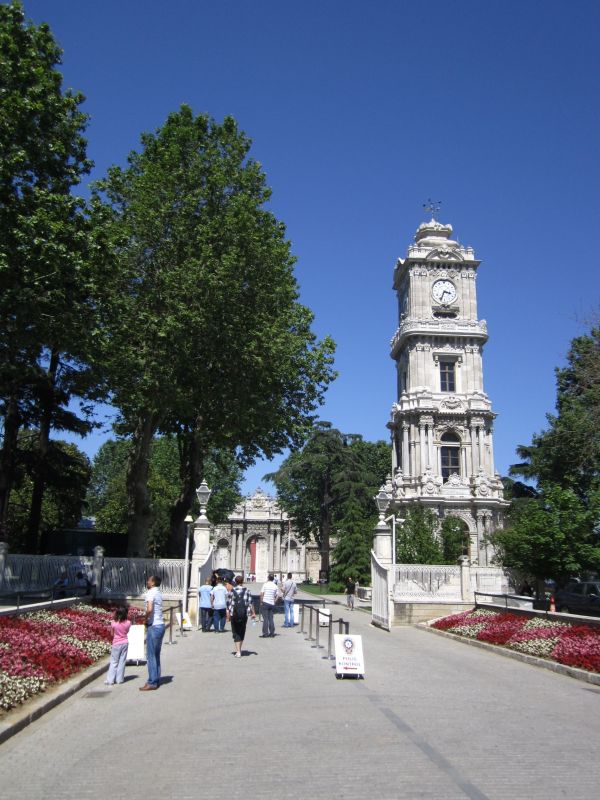| This is Edirne. It has a well preserved old district, as well as a few mosques. |
| The most interesting sight in this city is the Medical Museum. Describes how medicine was taught and practiced few centuries ago. They emphasize the way the mental patients were treated: at times when common practice was locking up insane people or even killing them for being possessed by the Devil, this hospital was treating them with music, herbs and other cures. |
Edirne
Istanbul misc
| This is Hagia Sophia, a former orthodox church, catholic church and mosque. It’s use, shape and decoration varied over centuries, depending on the history of the city itself. |
This is the Grand Bazaar, which, unlike the more authentic ones in Iran, feels more like a tourist attraction. |
| We spent one evening at a the Turkish dance show. |
| As you can see, I was the guest star 🙂 |
| Here you can see me catching actual knives on a wooden plate placed on my belly. |
| We spent a few days at Ceren and Bertan’s place, together with their dog (forgot the name, sorry!). Thanks again for hosting and guidance! |
| We followed their advice and took a boat trip to Buyukada Island, a very popular tourist destination. |
| Birds kept chasing the ship, picking up food from people’s hands. |
Unusual transit systems
| There are two underground funiculars in Istanbul. One of them, called “Tünel” is second-oldest subterranean urban railway in the world! |
| There are also two heritage tram lines. This is the one in Taksim, introduced in 1990. Enjoyable but not quite useful, since service is slow and rare. |
| There is also a short cable system. There are two alternating lines. On each line there are two gondolas travelling in tandem. This is something I haven’t seen before!
Full photo archive here. |
| We witnessed the quickest car towing ever. Highly effective!
|
The Ottoman times
The Military Museum
| The fall of Constantinople is depicted with paintings, models and artifacts at the Military Museum. |
| This is the chain the defenders used to block the mouth of the Golden Horn. During the Fourth Crusade, some 200 years earlier, the walls on that side of town were the first to collapse, leading to the defeat. |
| The Ottomans were unable to break the chain (yellow) but they came up with an interesting solution: they built a wooden road (red) around the Galata fort. They pushed their ships off the water on that road, thus circumventing the chain. This undermined defender’s morale and severed an important supply route from neutral Galata. |
| The museum exhibits a nice collection of weaponry, armor (for combat and ceremony) and artillery. |
| Click to see high res the Turkish version of the Armenian and Cyprus issues. Summary: a small enemy that can’t be defeated must be a terrorist AND the occupation is, in fact, a liberation! |
| In the garden there is a daily fanfare show. |











































